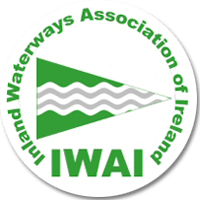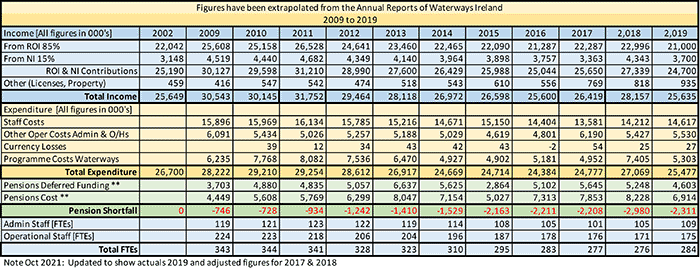Money Sources ………
Basic Funding as of 2019
Capital Funding from ROI and NI Governments
In addition to the basic maintenance funds, the 85/15% split, Waterways Ireland also receives money for specific Capital Projects. Using the year 2017 as an example, the ROI’s Department of Culture, Heritage and the Gaeltacht (DCHG) gave €2.7m and the NI’s Department of Infrastructure (DFI) gave €2.4m. Capital works are 100% funded in the jurisdiction in which they take place.
The DCHG ROI funding was spent on
- upgrades to structures and culverts due to failure
- new weed cutters
The DFI NI funding was spent on
- transforming end of life amenities throughout the Erne system
- repairing, rebuilding and replacing some of the lock gates on the Lower Bann
- other infrastructure
Capital Funding from other Organisations
Other amenities, located beside or on the waterways, receive funding from County Councils, Tourism and Sports organizations and the EU. In 2017 these included
- an upgrade to the area around Portumna Harbour was funded by Galway County Council
- the Lough Derg Blueway was underwritten by the Lough Derg stimulus fund and Failte Ireland
- the Shannon and Erne Blueway was funded by the Outdoor Recreation Infrastructure scheme
- an upgrade of the Canal towpaths in preparation for the Greenways, was funded by the Department of Transport Tourism and Sport (DTTAS) through local County Councils
- the Ulster Canal Greenway is financed by Peace Plus (Interreg Europe) and a cross-border consortium consisting of Monaghan County Council, Armagh Bainbridge Council, Craigavon Borough Council and East Border Region Limited.
Other Costs
While much of WI’s outlay has been reduced in recent years due to their decreased funding, pension costs have increased over the same time. In 2009 the annual amount paid out (the difference between funding and cost) was €750k, by 2017 this had risen to €2.2m and by 2019 it is purported to be €3.3m.
Total
As of 2019, the loss in basic maintenance funding to WI for the previous eight years, amounted to a total of €41 million, with the extra costs incurred for pensions over the same time at €17 million, this amounts to a total shortfall of €58 million. The resulting year on year decrease in staffing levels, from 344 in 2010 to 277 in 2017 (representing 66 full time equivalents, of which 47 were operational staff) has had a detrimental effect on maintenance work on our canals.
The financial outlook for Waterways Ireland does not look good, basic maintenance funding has still not recovered and the pension shortfall is rising. The current state of the navigations on the Grand and Royal Canals and the River Barrow reflects the significant drop in funding.
Nov 2020


